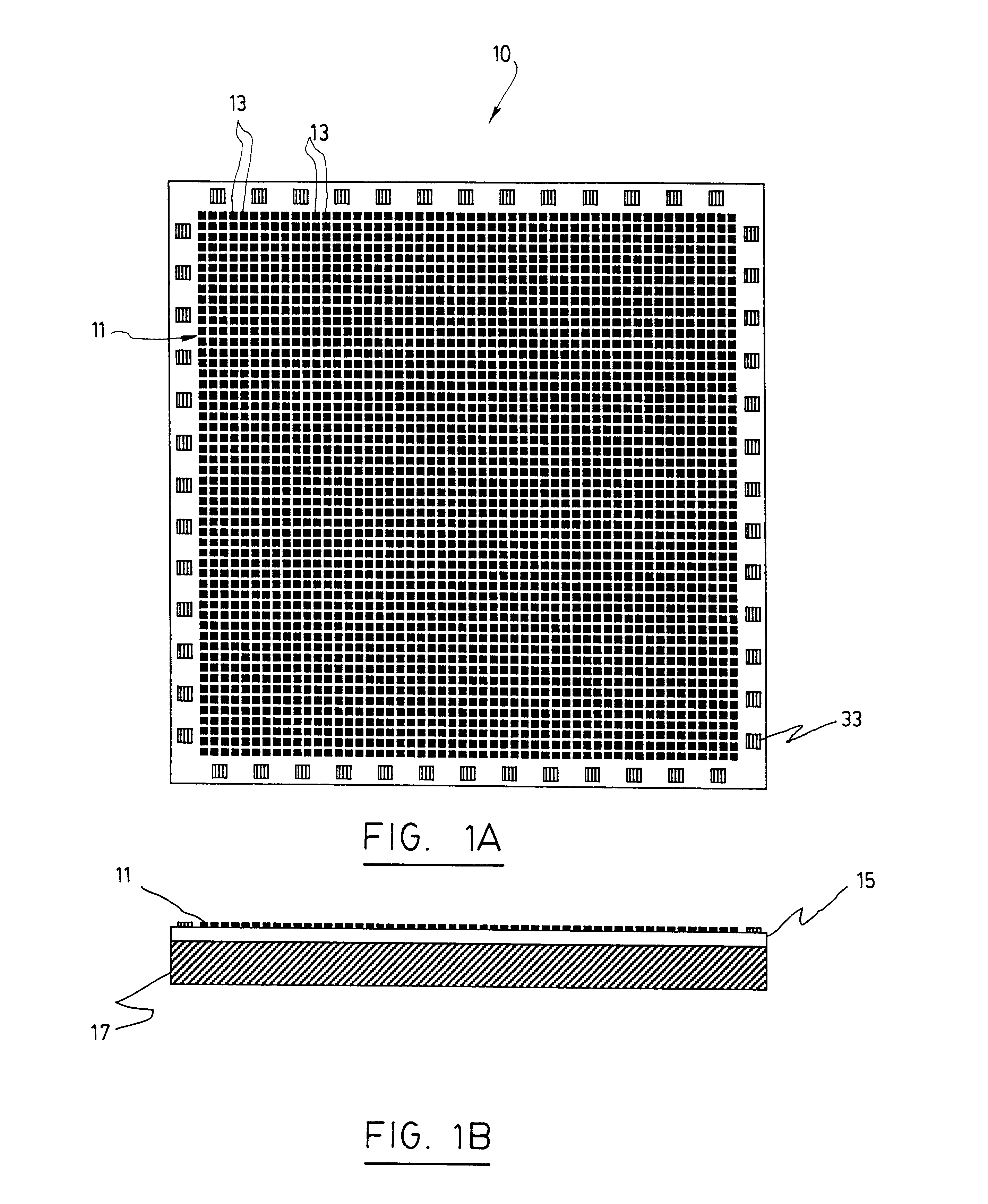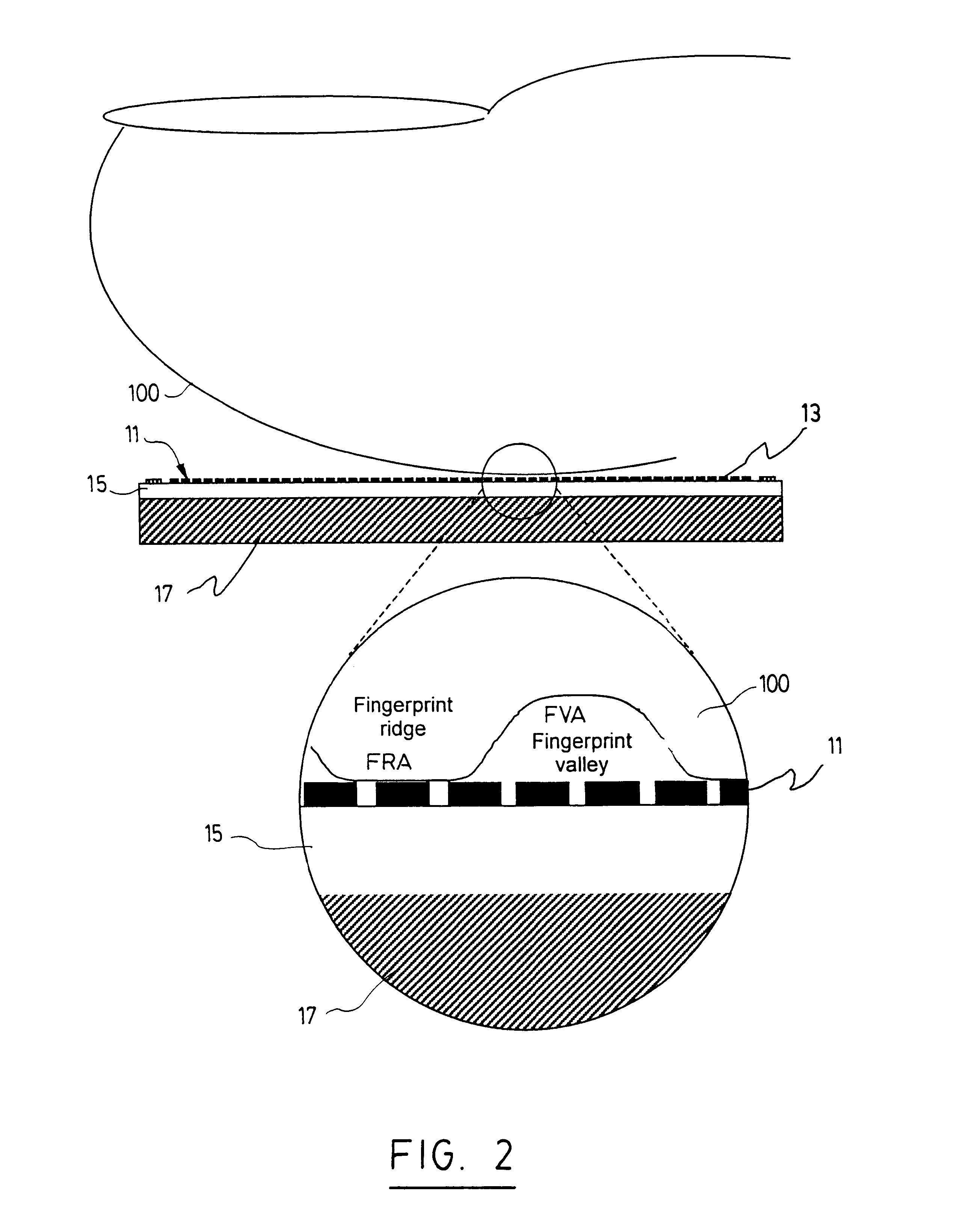Microthermistor based fingerprint sensor
a fingerprint sensor and microthermistor technology, applied in image data processing, transmission systems, transmission, etc., can solve the problems of inconvenient use for users, process not providing a good resolution, and time-consuming fingerprint identification activities performed by human operators
- Summary
- Abstract
- Description
- Claims
- Application Information
AI Technical Summary
Problems solved by technology
Method used
Image
Examples
Embodiment Construction
As mentioned previously, the present invention relates to fingerprint sensing, based on a temperature sensing cell array. In broad terms, the fingerprint sensor according to the present invention transforms the ridge and valley pattern of a finger, hereinafter referred to as a fingerprint, into an electronic output signal. Referring now to FIGS. 1a and 1b, the sensor 10 according to the present invention comprises a microthermistor array 11 for converting temperature into an electrical signal, the array 11 being composed of a plurality of microthermistors 13, each of the thermistors 13 being adapted to output an electrical signal proportional to a temperature variation; a read-out integrated circuit 15 operatively connected to the microthermistor array 11 for receiving the electrical signal and converting it into an electronic output signal representative of the ridges and valleys of a finger; and a substrate 17 for supporting the read-out integrated circuit 15 and the microthermist...
PUM
| Property | Measurement | Unit |
|---|---|---|
| distance | aaaaa | aaaaa |
| temperature | aaaaa | aaaaa |
| thermal | aaaaa | aaaaa |
Abstract
Description
Claims
Application Information
 Login to View More
Login to View More - R&D
- Intellectual Property
- Life Sciences
- Materials
- Tech Scout
- Unparalleled Data Quality
- Higher Quality Content
- 60% Fewer Hallucinations
Browse by: Latest US Patents, China's latest patents, Technical Efficacy Thesaurus, Application Domain, Technology Topic, Popular Technical Reports.
© 2025 PatSnap. All rights reserved.Legal|Privacy policy|Modern Slavery Act Transparency Statement|Sitemap|About US| Contact US: help@patsnap.com



